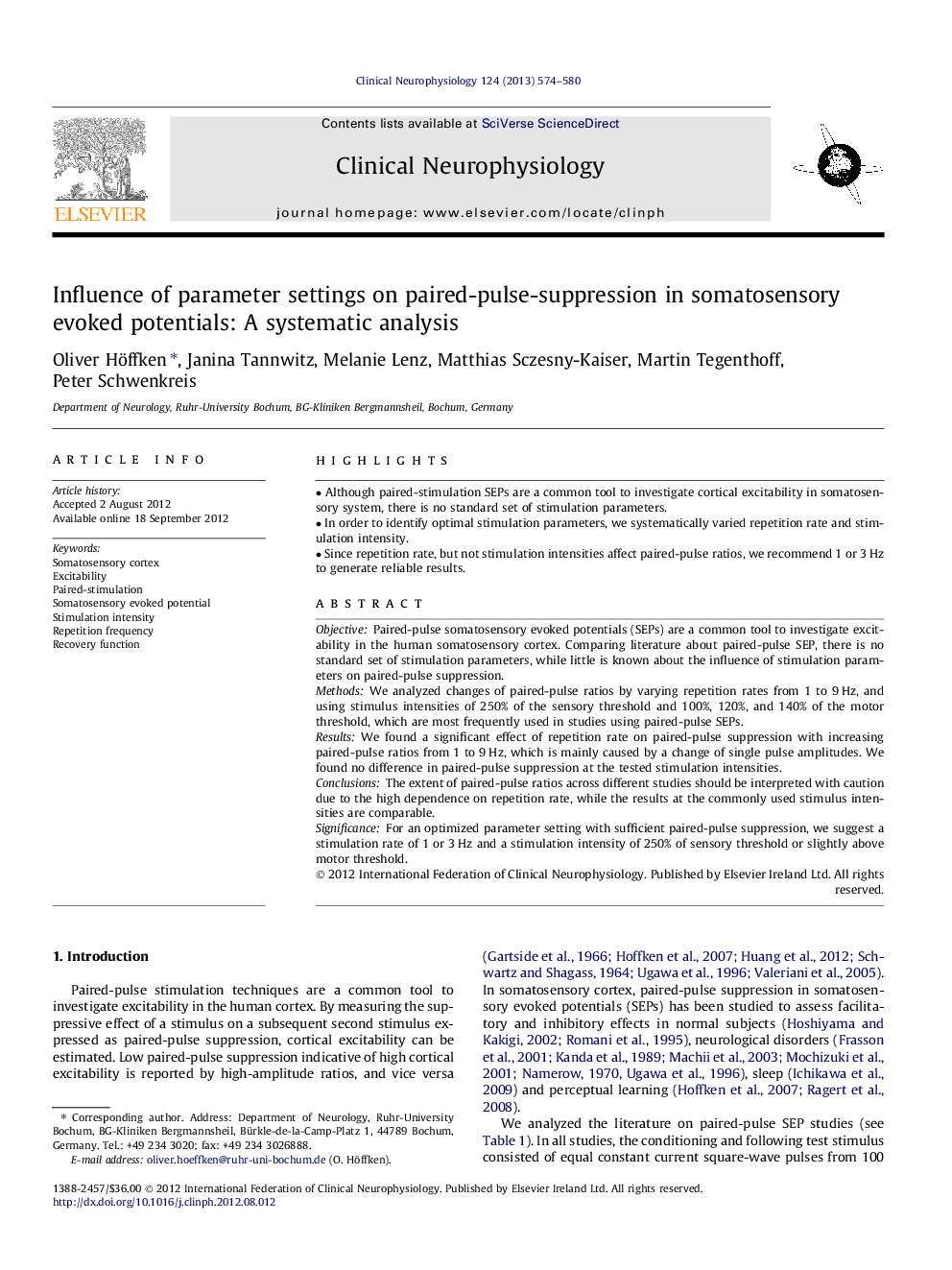| Article ID | Journal | Published Year | Pages | File Type |
|---|---|---|---|---|
| 3044371 | Clinical Neurophysiology | 2013 | 7 Pages |
ObjectivePaired-pulse somatosensory evoked potentials (SEPs) are a common tool to investigate excitability in the human somatosensory cortex. Comparing literature about paired-pulse SEP, there is no standard set of stimulation parameters, while little is known about the influence of stimulation parameters on paired-pulse suppression.MethodsWe analyzed changes of paired-pulse ratios by varying repetition rates from 1 to 9 Hz, and using stimulus intensities of 250% of the sensory threshold and 100%, 120%, and 140% of the motor threshold, which are most frequently used in studies using paired-pulse SEPs.ResultsWe found a significant effect of repetition rate on paired-pulse suppression with increasing paired-pulse ratios from 1 to 9 Hz, which is mainly caused by a change of single pulse amplitudes. We found no difference in paired-pulse suppression at the tested stimulation intensities.ConclusionsThe extent of paired-pulse ratios across different studies should be interpreted with caution due to the high dependence on repetition rate, while the results at the commonly used stimulus intensities are comparable.SignificanceFor an optimized parameter setting with sufficient paired-pulse suppression, we suggest a stimulation rate of 1 or 3 Hz and a stimulation intensity of 250% of sensory threshold or slightly above motor threshold.
► Although paired-stimulation SEPs are a common tool to investigate cortical excitability in somatosensory system, there is no standard set of stimulation parameters. ► In order to identify optimal stimulation parameters, we systematically varied repetition rate and stimulation intensity. ► Since repetition rate, but not stimulation intensities affect paired-pulse ratios, we recommend 1 or 3 Hz to generate reliable results.
